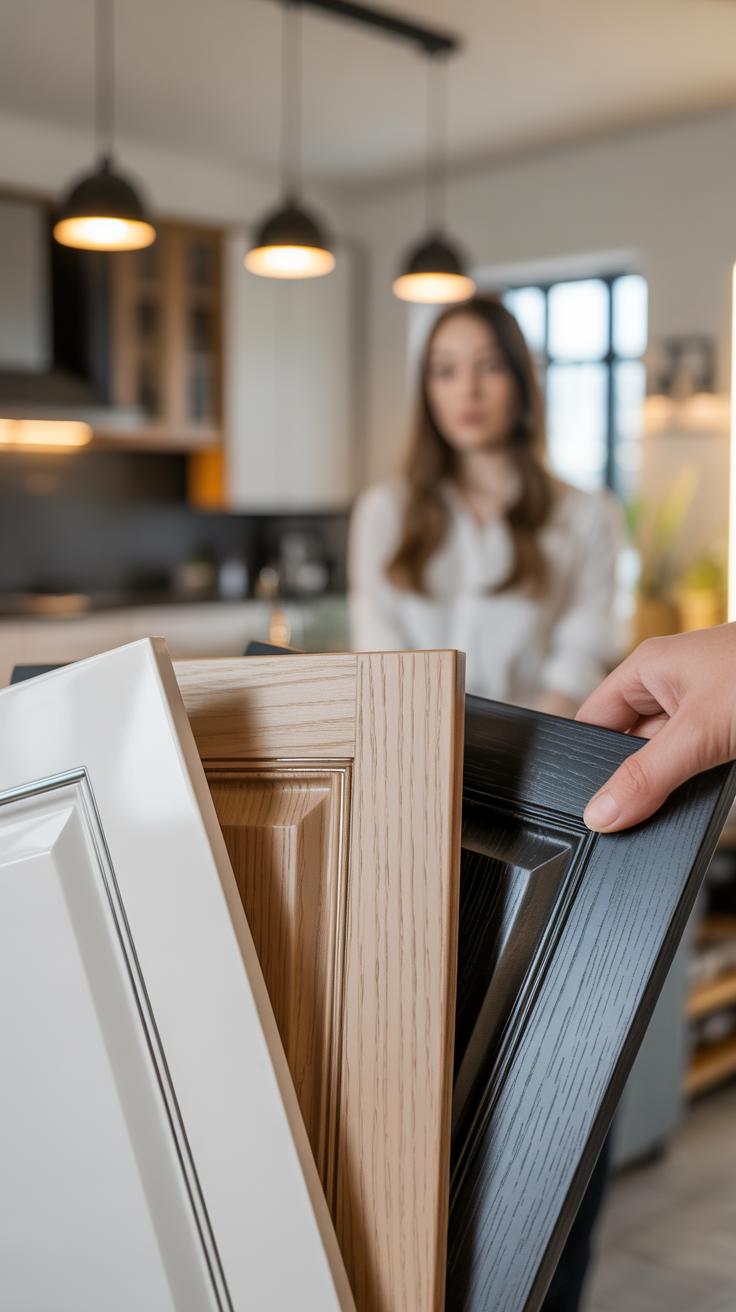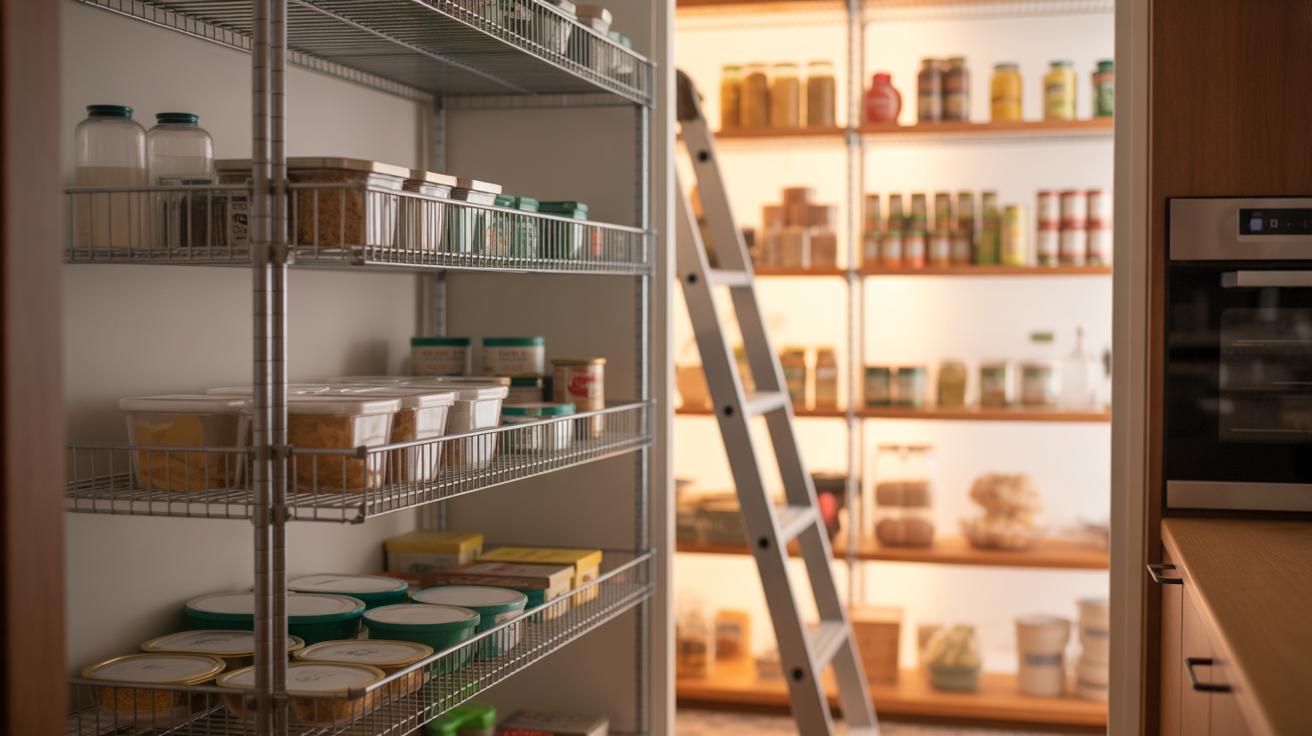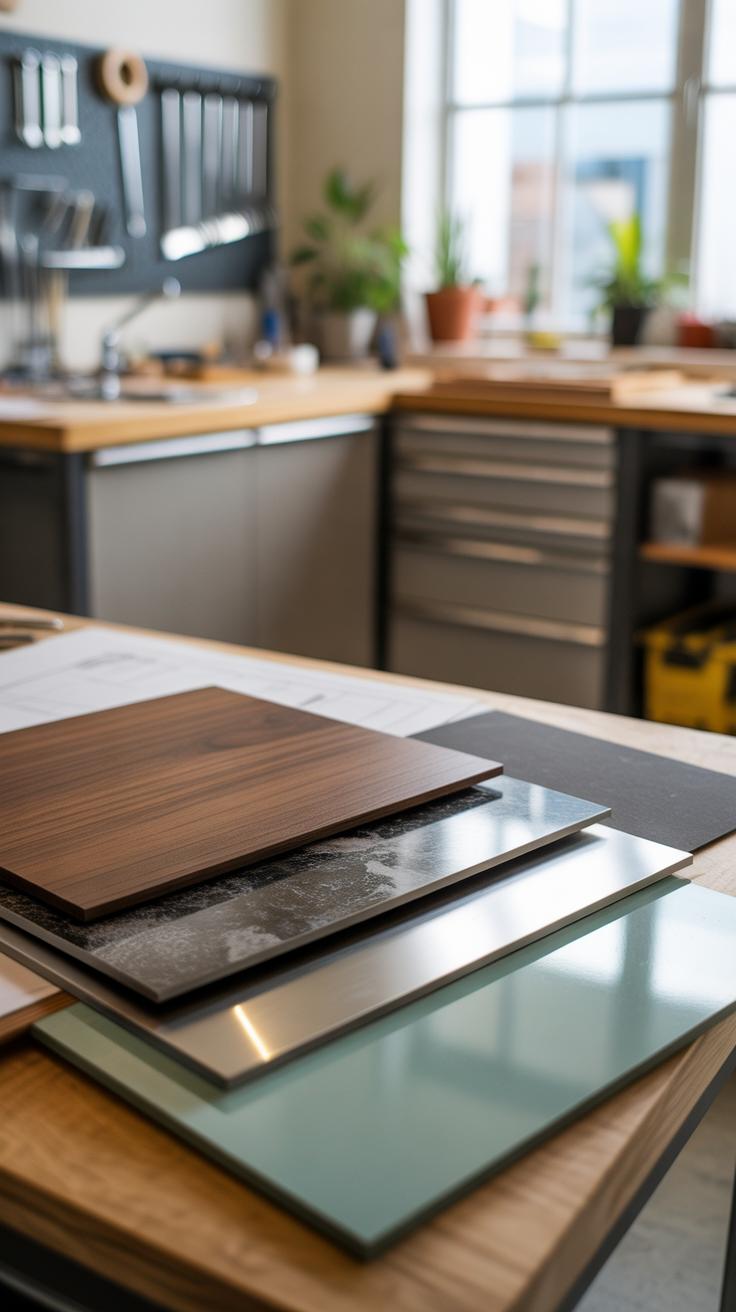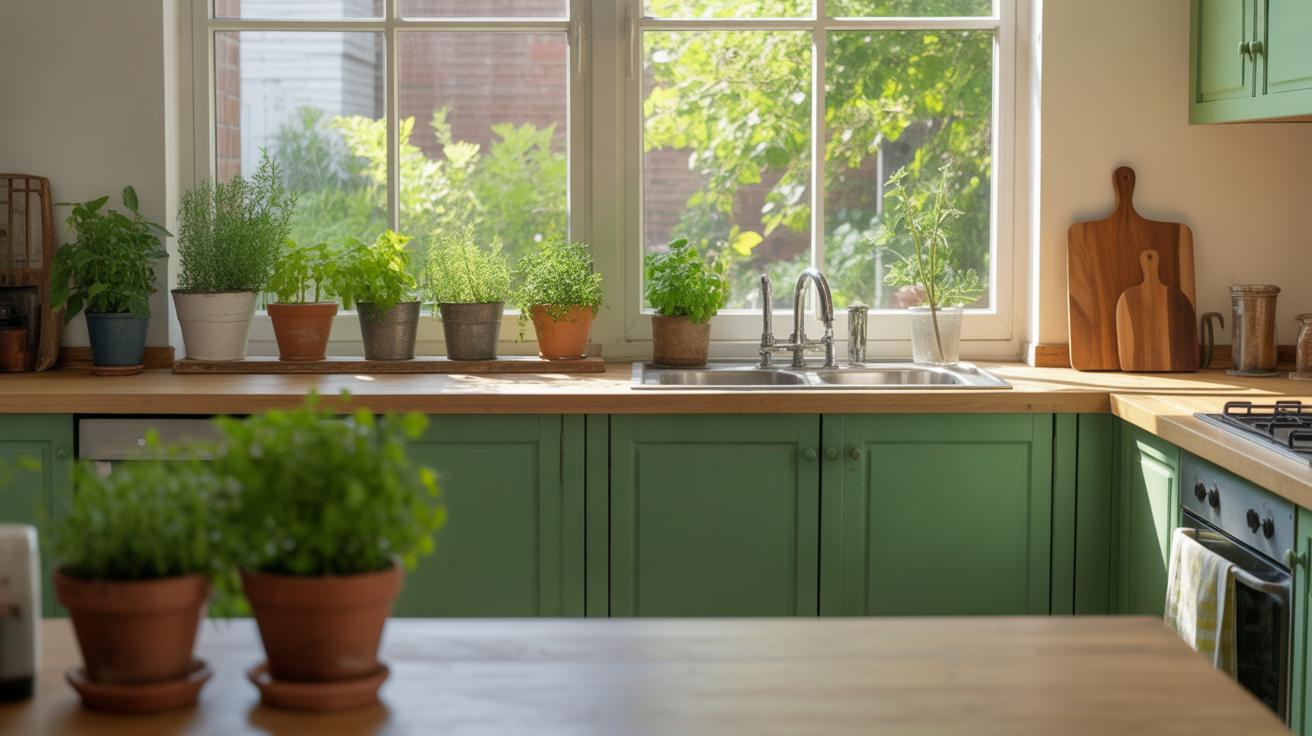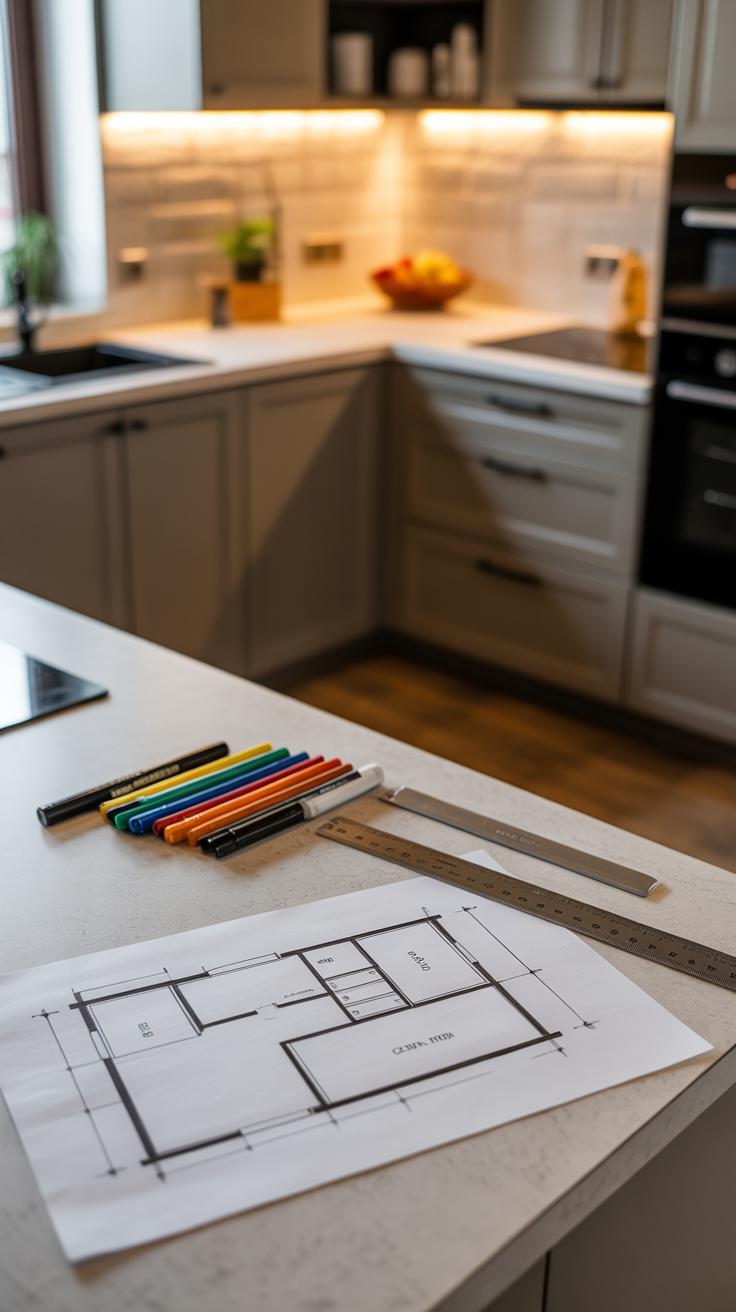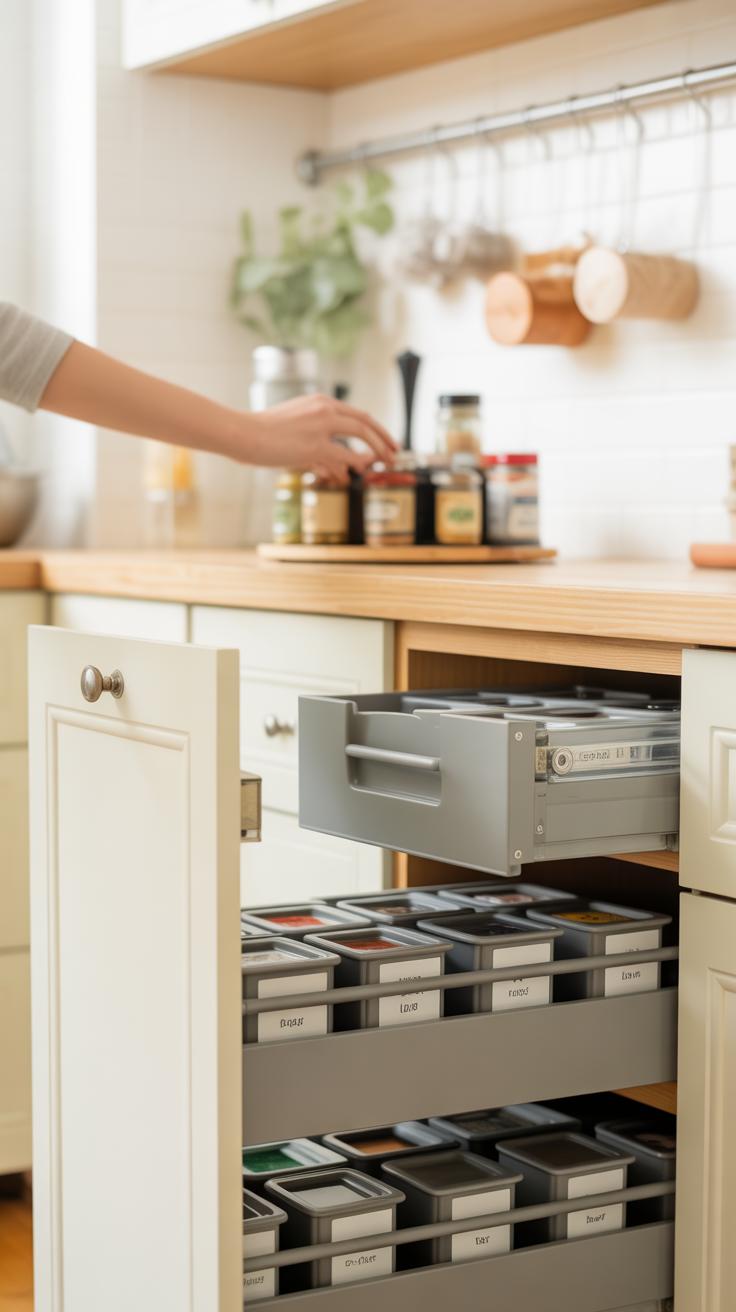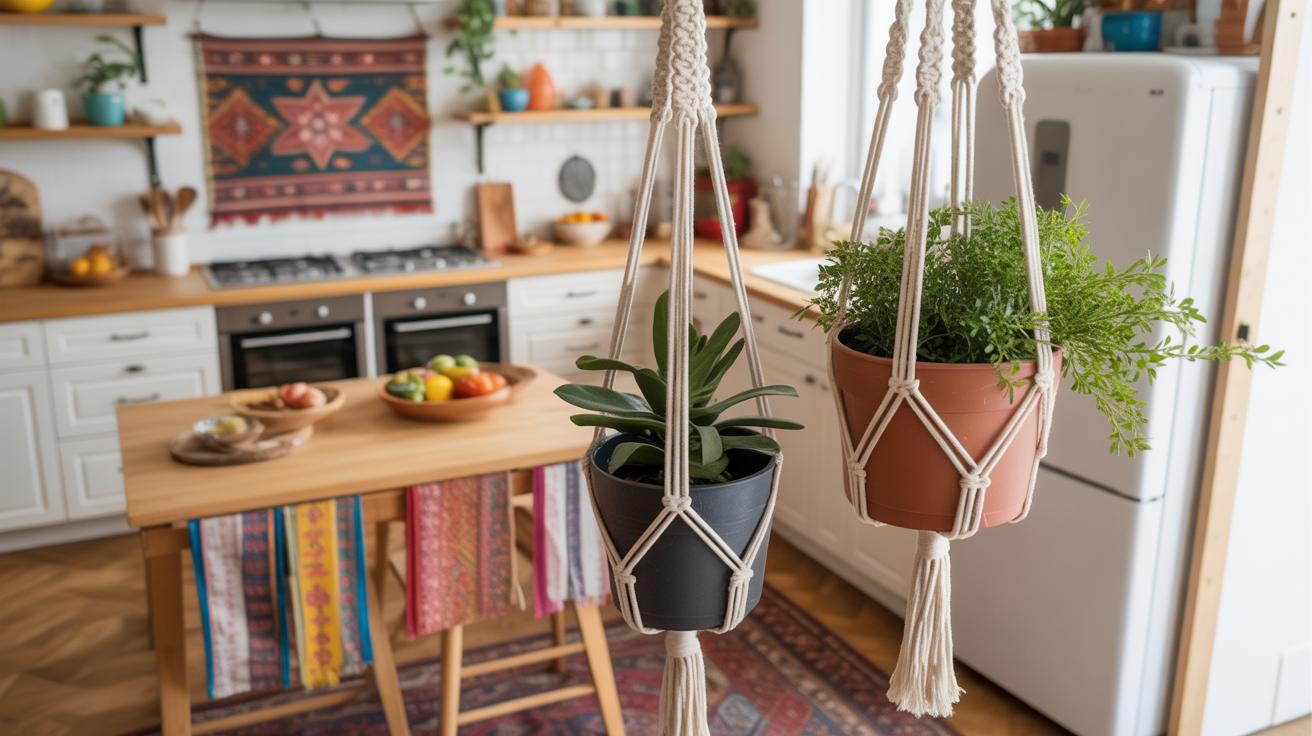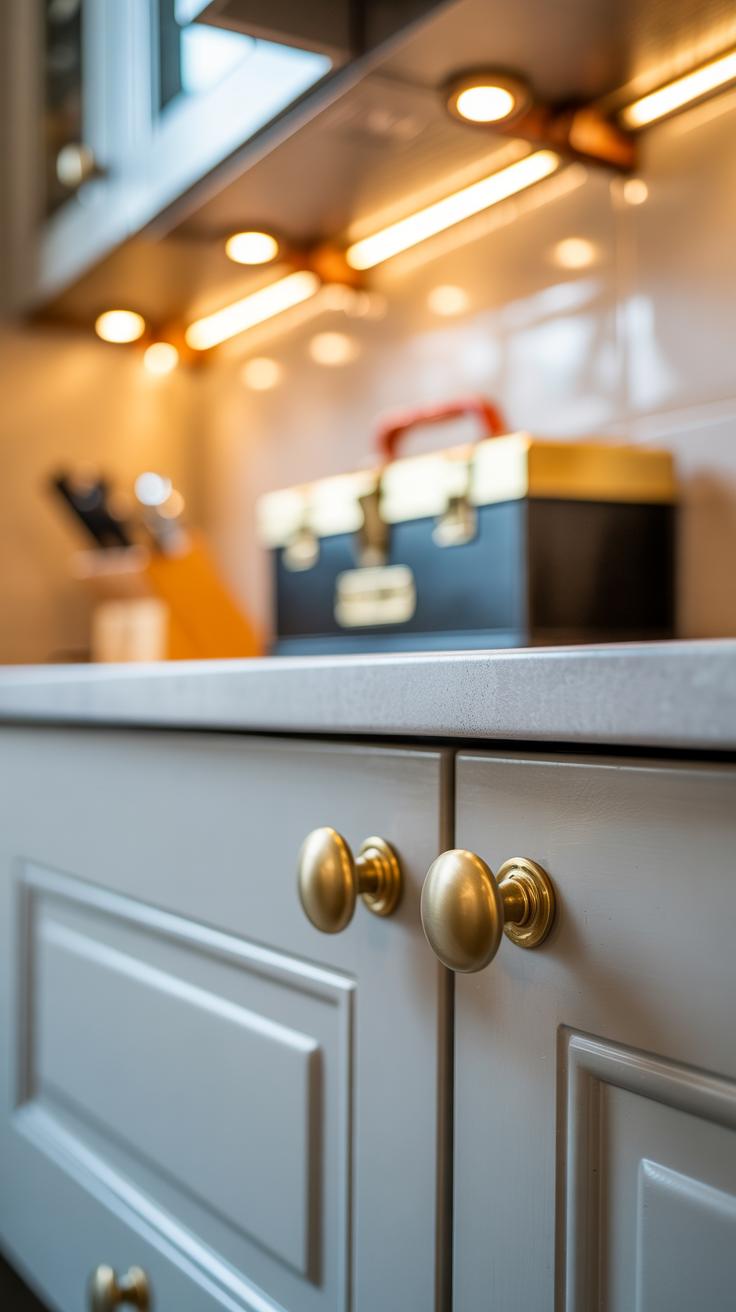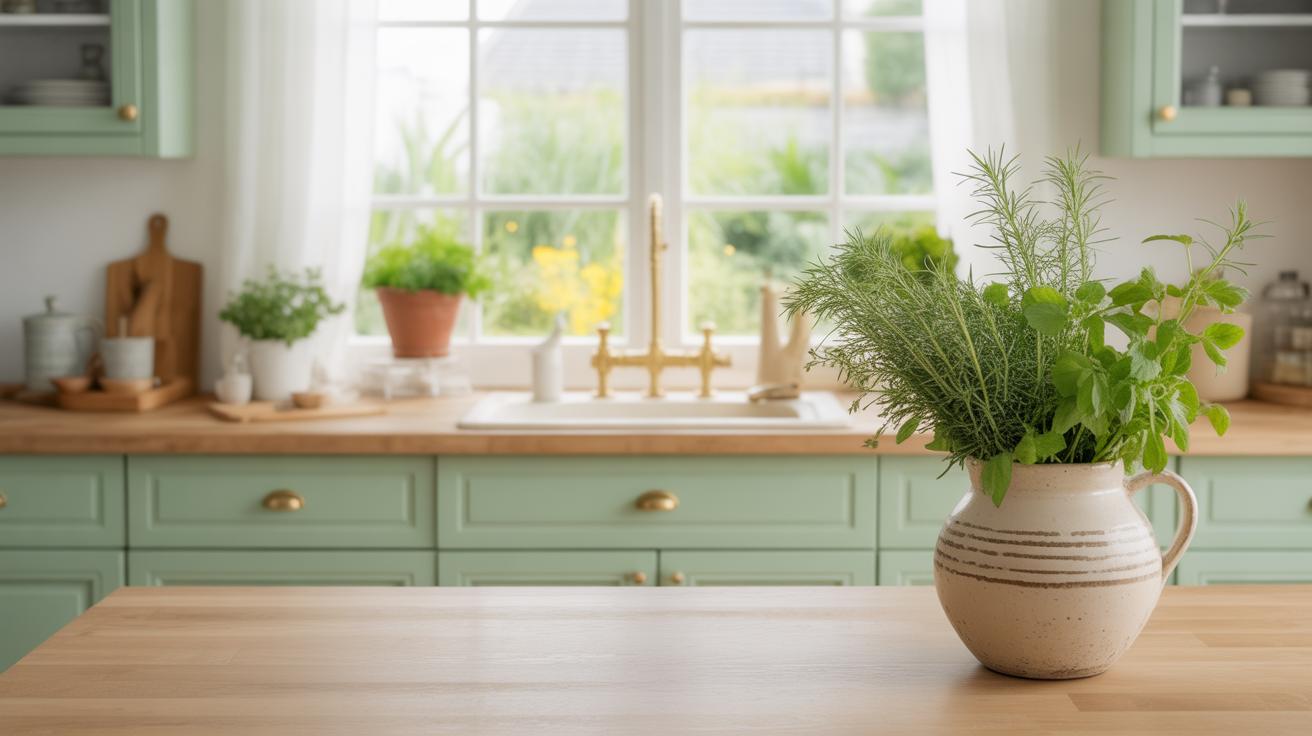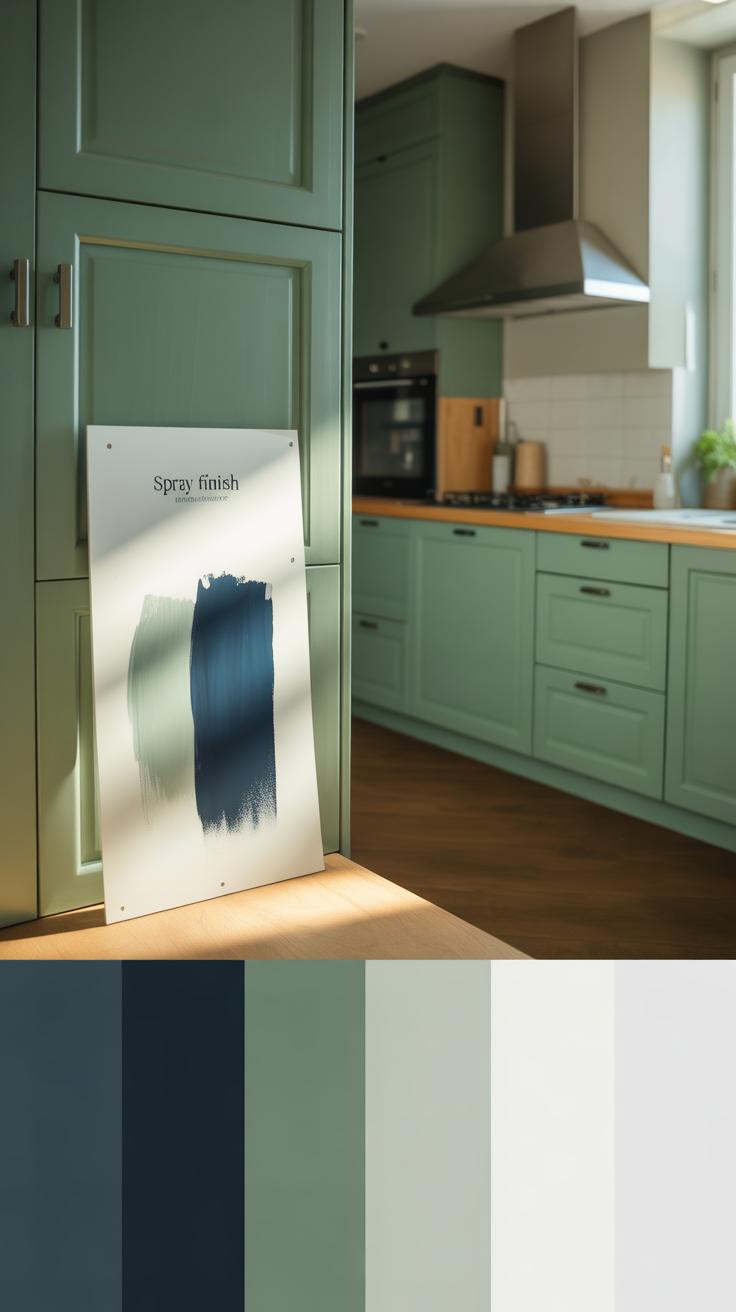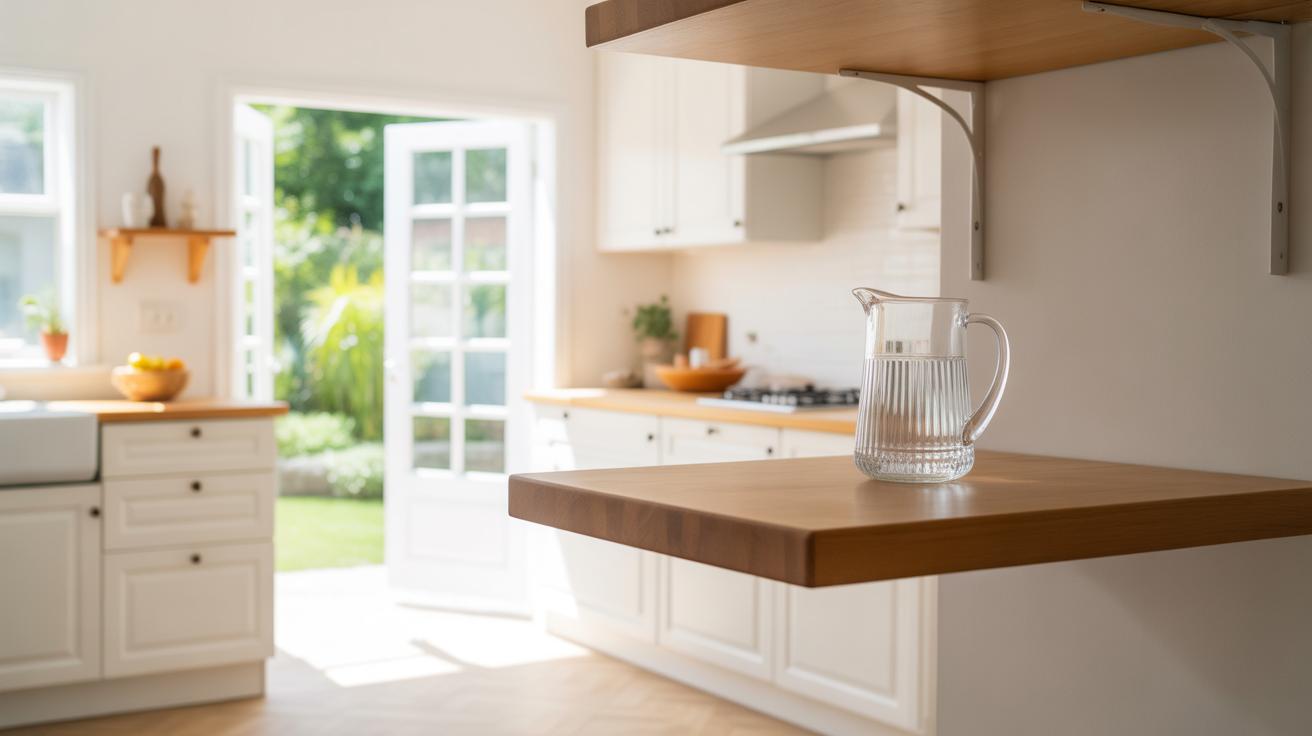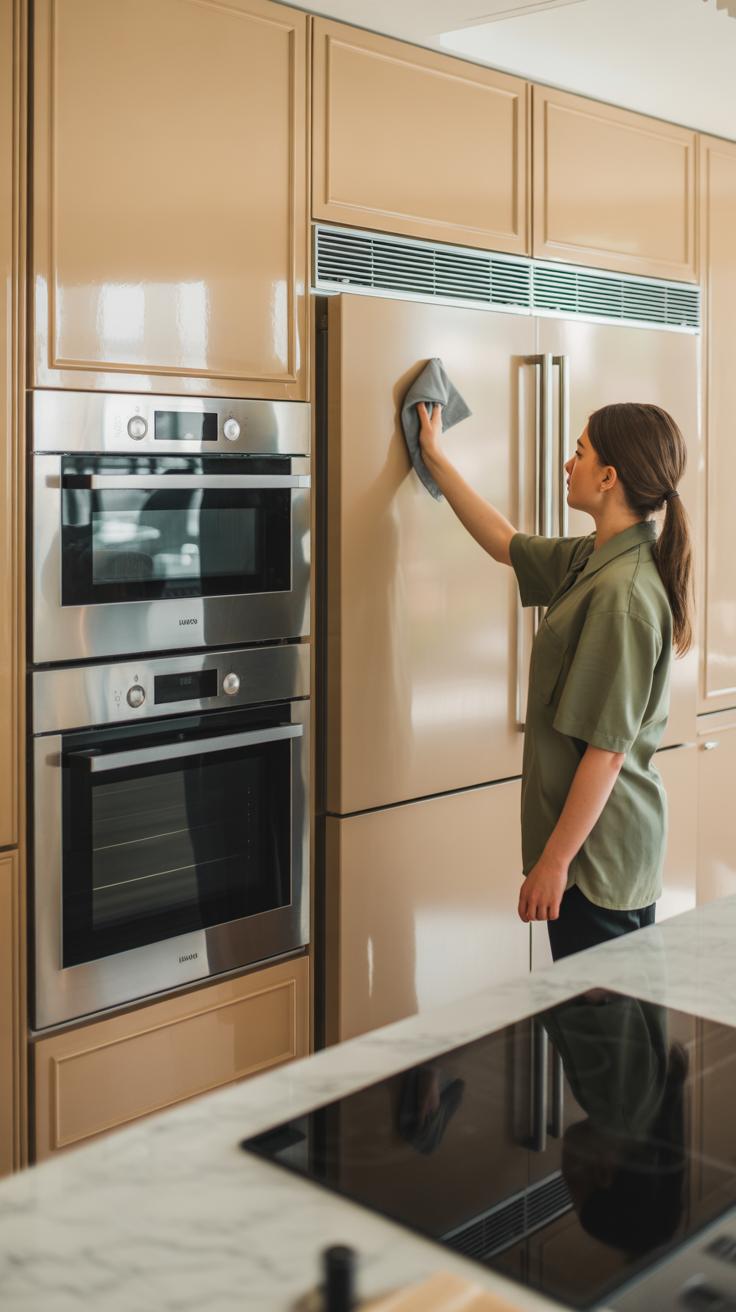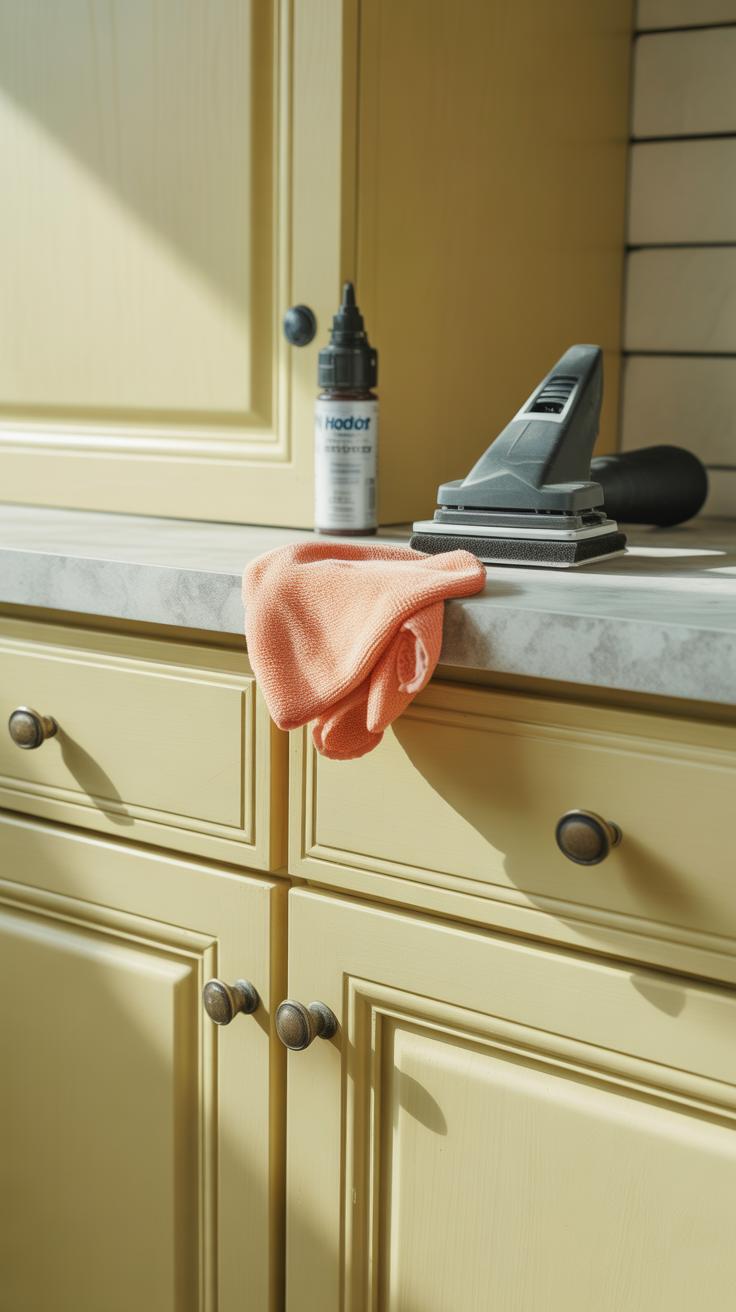Introduction
Modern kitchen cabinet design shapes how your kitchen looks and works. The right cabinets can make your kitchen feel open and stylish. They help keep things organized and easy to find. This article looks at ideas for kitchen cabinets that fit clean, modern homes.
We will discuss how to pick materials that last, designs that save space, and styles that match simple and smart kitchens. You will find tips to choose cabinets that suit your lifestyle and taste. The goal is to help you make your kitchen a place that looks good and works well every day.
Understanding Modern Kitchen Cabinet Styles
Modern kitchen cabinets are instantly recognizable by their simplicity and clean lines. You’re looking at surfaces without fuss—no decorative molding or carved details. Minimalism drives the design here. The goal often feels like reducing the cabinet’s presence, so the kitchen feels open and uncluttered.
The difference from traditional cabinets is quite obvious: traditional styles often include raised panels, ornate trim, or intricate hardware. Modern cabinets drop all that for flat, sleek surfaces and subtle hardware or none at all. Think of cabinetry that blends with the room, rather than standing out.
Popular looks in the modern world include slab doors—those completely flat fronts that practically disappear against the wall—and frameless cabinets that create smooth faces without bulky frames around the doors. You might notice polished high-gloss finishes that bounce light around or natural wood with simple grains emphasizing texture over fuss. It sometimes feels like modern cabinets aren’t trying to call attention to themselves, but, strangely, they end up making a strong statement precisely because of that.
What Makes a Kitchen Cabinet Modern
At their core, modern kitchen cabinets usually share some key traits:
- Flat, smooth surfaces without raised or inset panels
- Minimal to no decorative elements like ornate carvings or moldings
- Hardware that’s sleek, simple, or sometimes even hidden
- Materials like wood, metal, or engineered boards emphasizing clean textures
Many homeowners find this style appealing precisely because it feels so pared down and functional. There’s less visual noise, making kitchens feel more spacious. Yet, it’s not bland—there’s something refreshing about how these cabinets focus on pure form and material. While it might seem too simple at first, living with this kind of cabinetry can feel, well, calming.
Examples of Modern Cabinet Styles
When you explore modern cabinets, you’ll find a variety of finishes and door styles to choose from. Some common examples include:
- High gloss fronts that create a sleek, reflective surface—perfect for smaller kitchens needing brightness
- Matte finishes that tone down shine for a more subdued, natural look
- Natural wood veneers that highlight grains with minimal treatment, offering warmth without fuss
- Slab doors—flat panels without frames, which emphasize a seamless, monolithic effect
- Frameless or “full-access” cabinets that skip face frames to maximize storage and present a cleaner front
Each option nudges you toward a distinct vibe, from ultra-modern glossy to quietly warm wood. What might you personally lean toward? It’s interesting how even subtle tweaks in finish or door style can shape the whole kitchen’s mood.
Choosing Materials for Kitchen Cabinets
When picking materials for kitchen cabinets, you face several options—each brings its own mix of strengths and quirks. It’s not just about looks or cost; durability and how the material handles moisture or wear matter a lot, too. Let’s break down some common choices.
Wood and Engineered Wood Options
Solid wood feels classic and sturdy, often making kitchens feel warm and a bit luxurious. Think oak, maple, or cherry. It can last decades if cared for but tends to be pricier. Plus, wood can react to humidity—sometimes warping or swelling—so it might need more upkeep.
Engineered woods like MDF and plywood offer a different vibe. MDF is smooth and great for painting, and it resists dents better than soft wood. Plywood, built from layered wood veneers, handles moisture better than MDF and is stronger overall. Both often cost less than solid wood, which helps if you’re on a budget. On the downside, they’re not as “authentic” looking, and sometimes don’t hold screws as well as solid wood.
Modern Materials Like Metal and Laminate
Metal cabinets stand out in modern kitchens, providing a sleek, industrial feel. They don’t absorb moisture, clean up easily, and resist stains. Though, metal can scratch or dent, and cold surfaces may not suit everyone’s taste.
Laminate cabinets come in many colors and finishes, making them flexible for different styles. They resist water and stains well, so cleaning is usually simple. The downside? If damaged, laminate can chip or peel, and repairs aren’t always straightforward. But they’re generally affordable and practical.
Choosing the right material boils down to balancing look, budget, and how you use your kitchen. Would you prefer the warmth of wood even if it needs more care, or the sleekness of metal that’s easy to keep clean? The answers can shape your kitchen’s personality quite a bit.
Planning Your Kitchen Cabinet Layout
Before buying kitchen cabinets, making a clear plan is crucial. A well-thought-out layout saves you from frustration later. You’ll want to consider how you use your kitchen daily. Do you cook often? Do family members gather there? These questions shape your cabinet needs.
Start by understanding where key cabinets should go. Think in terms of zones—cooking, cleaning, and storage. For example, cabinets near the stove hold spices or pots. Near the sink, you need easy access to cleaning supplies and dishware. Locating storage where you prep food keeps tools within reach.
The working triangle concept guides placement between the sink, stove, and refrigerator. Keeping cabinets around this triangle helps keep things within arm’s reach and reduces unnecessary steps. It might feel a bit basic, but trust me, ignoring this often leads to a clunky, awkward kitchen layout.
Planning also means measuring your space carefully. Don’t forget doors, windows, and walkways. Your kitchen should feel open enough to move freely. But try not to cram too much in; cabinets that crowd can slow you down rather than help.
In other words, think beyond just style or budget. Your cabinet layout must serve how you live. Take your time sketching, measuring, maybe even using online tools. Then you’ll shop smarter—and avoid those “what was I thinking?” moments.
Maximizing Storage and Organization
When you start thinking about kitchen cabinet storage, it’s easy to assume you just need shelves, right? But, well, it’s more than that. Pull-out shelves, for example, make accessing items at the back so much easier. Instead of digging around in deep cabinets, you slide out an entire shelf and see everything at once. Deep drawers work well for bulky pots and pans, letting you stack without losing track. Corner cabinets often get messy, but installing lazy Susans or pull-out corner trays can turn awkward nooks into usable space.
Spices and utensils deserve special mention since they clutter quickly. Narrow pull-out racks near your cooking zone keep spices within reach, which I think is a game changer when you’re mid-recipe. Drawer dividers can separate spoons, whisks, and other gadgets so you don’t end up with a jumbled mess every time you open a drawer.
So, how do you balance big items with small ones? Generally, big cookware goes low, ideally in deep drawers or cabinets close to your stove. Smaller items like spices or measuring cups fit better in upper cabinets or pull-out racks. That said, this isn’t a hard rule; you might prefer storing favorite pots closer to prep areas instead. It’s really about what works for you, not what the experts say.
If you haven’t experimented much with cabinet organizers, maybe now’s a good time. A couple of simple additions—like pull-out trays for baking sheets or built-in spice racks—could make a surprising difference. Would you say that better organization actually changes how you cook or use your kitchen? At least, it did for me.
Lighting and Hardware for Cabinets
Lighting can change the whole feel of your kitchen, especially when it’s tucked under the cabinets. Those under-cabinet lights do more than just look neat—they make a real difference when you’re chopping veggies or reading a recipe. Without them, shadows can play tricks and slow you down. LED strips and puck lights are popular choices, offering clear, bright light without getting too hot or gulping electricity. You might think simple overhead lights would be enough, but trust me, the focused illumination right where you need it makes cooking safer and easier.
Then there’s hardware—the handles, pulls, and hinges that many overlook but actually shape how your cabinets function and appear. Soft-close hinges have changed how I feel about kitchen cabinets; no more loud slams or rushing to catch a drawer. It’s a subtle upgrade, but one that makes your kitchen quieter and more pleasant. As for pulls and knobs, the choices range from sleek, minimal bars to quirky knobs that catch the eye. Picking the right ones can either blend into the background or become a focal point, depending on your style.
Push-to-open systems are another option if you prefer a handle-free look. They keep surfaces smooth and uncluttered but might not suit everyone’s taste or usage habits. Still, they add a modern twist and simplify access in a different way.
Think about how these small details—lighting that brightens every corner and hardware that feels good to use—come together. They’re not just about aesthetics or convenience, but about making your kitchen genuinely pleasant to be in. Don’t you find it curious how such simple additions can change your daily kitchen routine? It’s a bit like the difference between a room you walk into and one you want to stay in.
Color and Finish Choices for Modern Cabinets
Choosing the right color and finish for your modern kitchen cabinets can completely change the room’s atmosphere. You might lean toward neutral colors because they create a calm and open feeling. Greys, whites, and soft beiges often feel fresh but not cold. On the other hand, adding a bold accent—like a deep navy or charcoal—can introduce a sense of personality without overwhelming the space. Wood tones, meanwhile, bring a bit of warmth and texture, making the kitchen feel inviting.
Matte finishes tend to absorb light, giving cabinets a soft, understated look. They’re good if you want the kitchen to feel cozy but modern at the same time. Glossy finishes bounce light around, often making the room feel larger and brighter. But be cautious—too much shine can sometimes come off as a bit sterile or flashy. Textured finishes add dimension and can break the flatness that some modern designs risk.
When picking colors and finishes, think about how you want your kitchen to feel day-to-day. Do you want it to be peaceful and quiet, or energetic and bold? This choice can subtly influence your mood every time you step inside.
Popular Colors in Modern Cabinet Design
White is the classic choice in modern kitchens. It makes the space look clean and open, though it can feel a bit clinical if not balanced with other elements. Gray offers more depth without being dark or heavy—it’s versatile and often grounds a room nicely. Black cabinets, while less common, provide a sleek, dramatic look but might make the kitchen feel smaller if the lighting isn’t right.
Natural wood tones vary widely, from light oak to rich walnut, and they bring an organic touch that many modern kitchens need to avoid looking too sterile. They make the space feel warmer and more relaxed. Each color creates a different vibe, so it’s okay to feel torn between options.
Choosing the Right Finish
Matte finishes avoid glare and give cabinets a smooth, modern softness but can show fingerprints more easily. Glossy or high-gloss finishes reflect light and create a bright, vibrant look—perfect if your kitchen lacks natural light or if you need a bit of energy in the room. Textured finishes, like wood grain or subtle embossing, provide a tactile quality and can hide smudges better. They tend to look more casual but can add character that purely smooth surfaces can’t.
Ultimately, your choice of finish will shape how your kitchen feels, perhaps more than any other design element. Are you someone who enjoys a shiny surface that demands attention, or do you prefer something muted that blends effortlessly?
Blending Cabinets with Modern Kitchen Appliances
When you think about modern kitchen design, the way appliances and cabinets come together can really make or break the space. Built-in appliances, for example, can be tucked neatly behind cabinet doors, which keeps the kitchen looking clean and uncluttered. Imagine your refrigerator panel matching the surrounding cabinetry so closely that it almost disappears—this subtle touch adds a calm rhythm to the area.
Dishwashers, too, can be disguised with matching cabinet fronts. This not only maintains a consistent look but also softens the presence of machines that might otherwise stand out. I remember a kitchen I saw where the oven was placed right next to a pull-out pantry cabinet; it made grabbing spices and prep items way easier. Such layouts make the space feel thoughtfully planned, and you don’t have to work around awkward gaps or mismatched finishes.
Here are a few ideas that could help you put this into practice:
- Choose panel-ready refrigerators that let you cover the machine with the same door style as your cabinets.
- Opt for dishwashers designed for custom panels rather than the usual stainless steel look.
- Position ovens near prep counters or accessible storage for smooth cooking workflows.
- Consider stacking or grouping appliances to reduce kitchen traffic and keep counters free.
Does hiding appliances behind cabinet doors always work? Sometimes you want a splash of stainless steel or glass to break the monotony—but that contrast can be tricky to balance. Your kitchen’s flow depends a lot on how you place these elements. Think about how you move while cooking, and plan accordingly. It’s more about function than just looks. After all, a well-placed oven or a dishwasher that opens without bumping into drawers can change your whole cooking experience.
Maintaining and Updating Kitchen Cabinets
Keeping your kitchen cabinets in good shape doesn’t have to be a big chore. Simple routines can make a noticeable difference over time. Cleaning them regularly with a mild soap and water solution is usually enough to remove grease and dirt. Avoid harsh chemicals which might strip finishes or dull the surface. A soft cloth or sponge works better than abrasive scrubbers—that’s my go-to choice even when things get messy.
Sometimes, small issues like loose hinges or minor scratches crop up. Tightening screws and touching up scratches with a matching marker or wax stick can save you from bigger expenses later. If a door feels stubborn or squeaks when you open it, a little lubricant on the hinges often does the trick. It’s surprising how these small fixes can extend your cabinets’ life.
When it comes to updating older cabinetry, you don’t always need to replace the whole thing. Painting the cabinet fronts can give your kitchen a whole new look without a full renovation. Picking a fresh color or a simple white can liven up a dated kitchen fairly quickly and affordably. Swapping out old handles and knobs for newer hardware is another quick way to refresh without much effort. These modest changes might feel small, but they add up to a noticeable update.
Of course, there are times when refinishing or even replacing becomes necessary—if the wood warps or water damage sets in extensively. But before you decide, consider the cost and hassle against simple upgrades. Sometimes, keeping what you have and just giving it a facelift works better and saves money. Isn’t it a bit satisfying to see old cabinets come back to life with a fresh coat of paint and a few hardware swaps? It feels like a win without the full stress of a remodel.
Conclusions
Choosing modern kitchen cabinets is key to creating a space that feels fresh and useful. Selecting cabinets made from strong materials helps them last long while looking good. Better storage options make daily tasks easier and save time. Simple, clean lines keep the look neat and fresh without crowding the space.
Remember to think about how you use your kitchen. Your cabinets should help you cook, clean, and store efficiently. By following the ideas shared here, you can build a kitchen that works well and looks sleek. Your modern kitchen cabinets will bring both style and function to your home.


